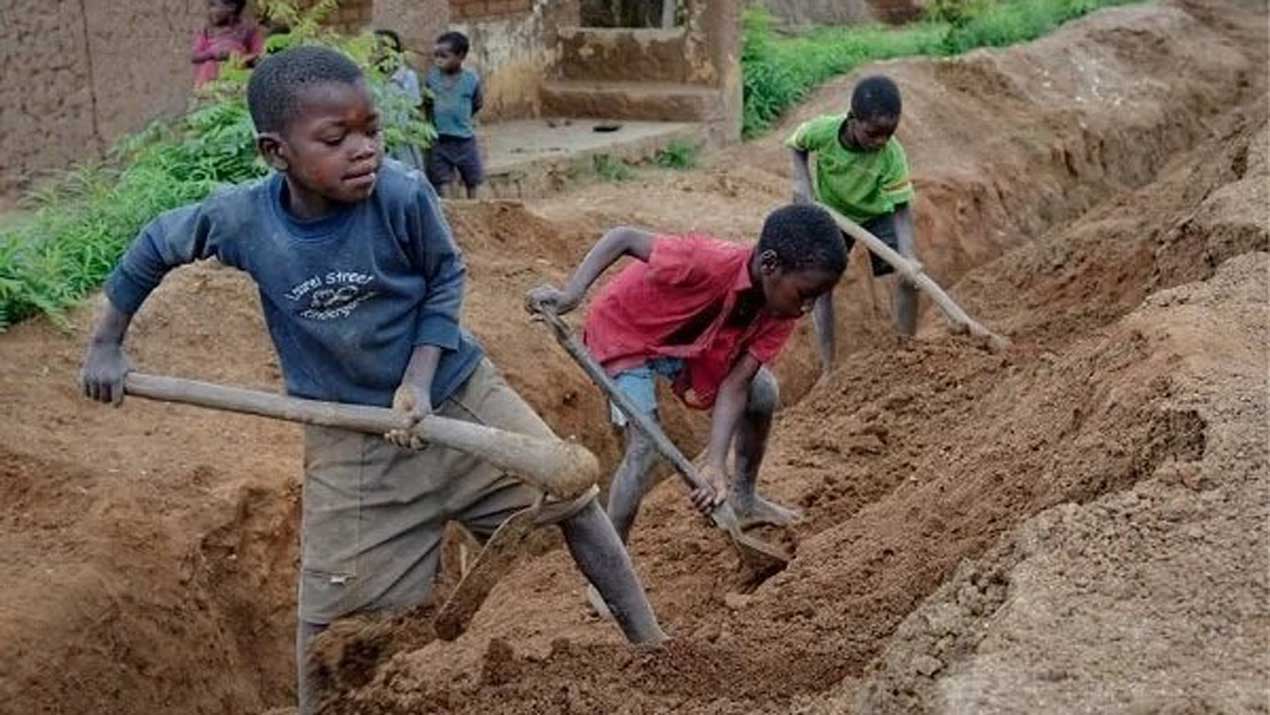A new report from the National Bureau of Statistics (NBS) reveals a concerning reality: over 24 million Nigerian children are engaged in labour, with 14.3 million in hazardous work as of 2022. This issue is particularly prevalent in the northwest geopolitical zone, but the southeast region has the highest percentage of child labourers, with nearly half of its children affected.
Nationally, almost two out of every five Nigerian children are involved in child labour, working an average of 14.6 hours per week. As they grow older, this burden increases, with children aged 15–17 working an average of 24.6 hours per week. These findings underscore the urgent need for targeted interventions to address child labour across Nigeria.
Cross River
Topping the list of Nigerian states with high rates of child labour is Cross River State. According to a new report from the National Bureau of Statistics (NBS), an alarming 67.4% of children in Cross River State are involved in labour. This figure is especially concerning as it extends from the youngest age group into adolescence, indicating a persistent challenge faced by the state in combating child labour.
Yobe
Following closely behind is Yobe State, with 62.6% of its children engaged in labour. The impact of child labour is notably high in the youngest age group, suggesting potential cultural, educational, or economic influences on children’s participation in labour activities. However, there is a significant drop-off in the oldest age group, indicating possible shifts in opportunities or responsibilities as children grow older.
Abia
Climbing to the third spot is Abia State, reporting a child labour rate of 60.1%. The data highlights a peak in labour engagement among children aged 15–17 years, reaching as high as 66.9%. This trend suggests an increasing reliance on older children for strenuous tasks, reflecting the challenges faced by families and communities in Abia State.
Plateau
Plateau State ranks fourth on the list, with 58.9% of its children involved in labour. The data reveals a consistent pattern of child labour across all age categories, indicating a sustained level of engagement that does not fluctuate significantly with age. This suggests a systemic issue that requires targeted interventions to address effectively.
Taraba
Midway through the list is Taraba State, where 58.6% of children are engaged in labour. Interestingly, the data shows lower percentages in the 12–14 age group compared to other states, indicating potential variations in factors influencing child labour across different regions of Nigeria.
Ebonyi
Ebonyi State follows closely behind, with 56.2% of its children involved in labour. The data suggests a lower engagement rate among children in the transitional age group of 12–14 years, highlighting potential differences in labour dynamics within the state.
Imo
Tied for the seventh position with Ebonyi is Imo State, reflecting a child labour rate of 56.2%. Of particular concern is the steep rise in child labour as children grow older, with incidence rates reaching 64.2% and 65.4% in the 12–14 and 15–17 age groups, respectively.
Kogi
Kogi State shows a relatively uniform distribution of child labour across age brackets, with 54.4% of children aged 5–17 involved in labour. This suggests a consistent level of child labour engagement across different age groups within the state.
Bauchi
In Bauchi State, the percentage of children engaged in labour slightly increases to 53.3%. However, there is a declining trend in child labour incidence with age, indicating potential shifts in responsibilities or opportunities for older children within the state.
Akwa Ibom
Initiating the list with the lowest percentage among the top ten states is Akwa Ibom State, where 52.5% of children are involved in labour. While this figure is the lowest on the list, it is still concerning, especially considering the impact on the well-being and development of children in the state.
